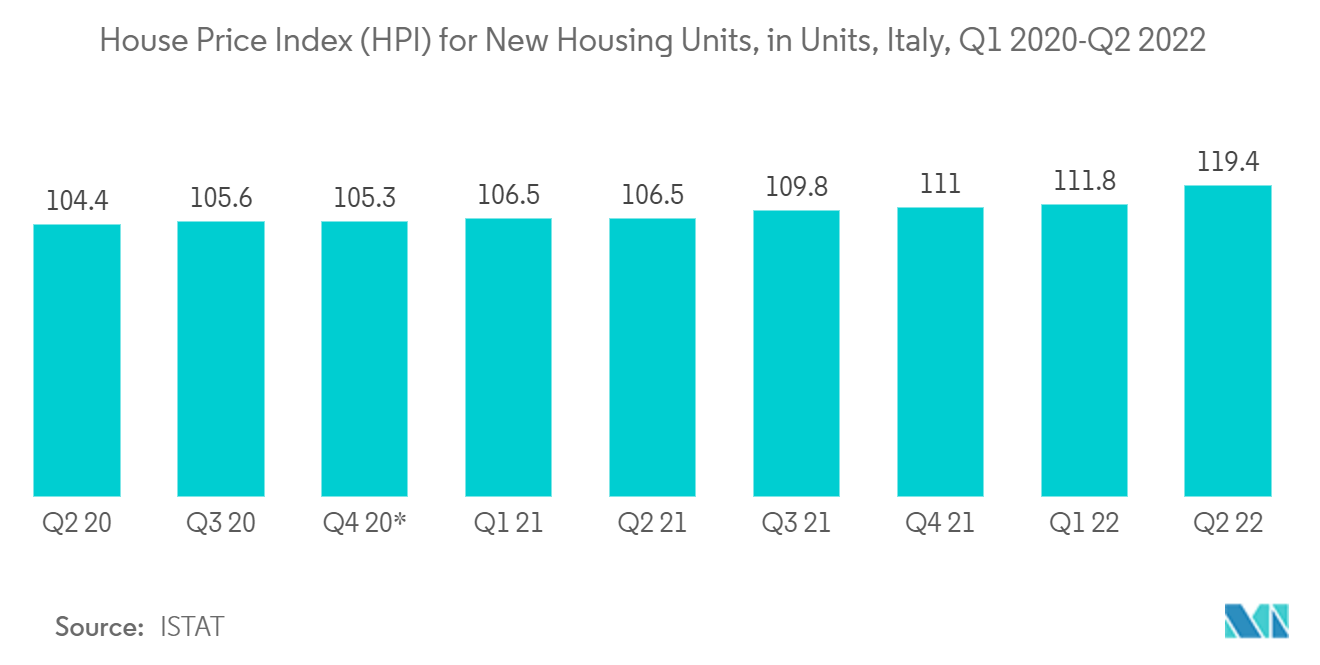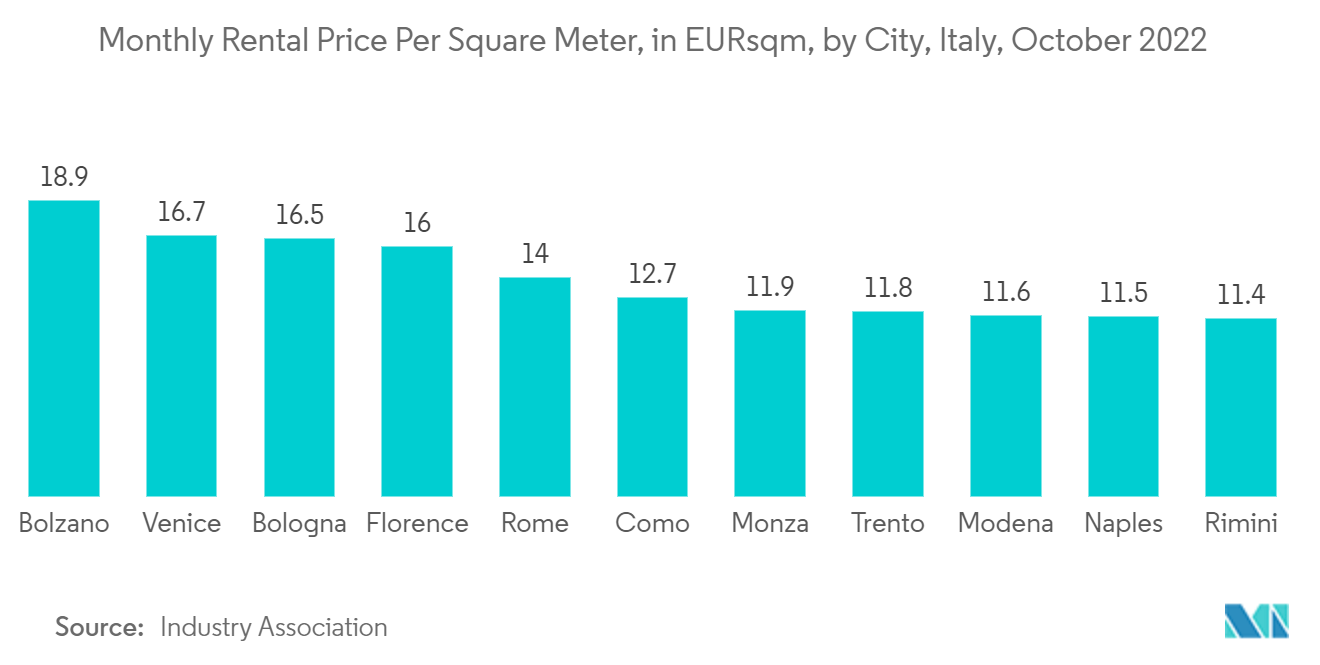Market Trends of Italy Condominiums and Apartments Industry
This section covers the major market trends shaping the Italy Condominiums & Apartments Market according to our research experts:
Despite skyrocketing living expenses fueled by high inflation, average home prices in Italy rose.
The COVID-19 pandemic has dealt another blow to Italy's still-fragile economy, which has never fully recovered from the 2008-2009 global financial crisis. The Italian economy was expanding slowly prior to the financial crisis, with average GDP growth of 1.2% from 2001 to 2007. Since then, it has been a horrible ten years. 2008 had a 1% decline in the economy, while 2009 saw a further 5.3% decline. According to the data, the nation's growth returned to 1.7% in 2010 and 0.7% in 2011, but it declined by 3% in 2012 and 1.8% in 2013.
The Italian economy steadied in 2014, then expanded marginally by 0.8%, 1.3%, 1.7%, and 0.9% in the following years. Italy's economy expanded by a pitiful 0.5% in 2019, despite trade disputes and dim investment prospects.
During the Covid-19 pandemic's beginning in 2020, the economy saw a severe 9% recession. When pandemic-related limitations were eased, the economy grew by 6.6% last year; nonetheless, this was not enough to completely make up for the previous year's significant fall.
According to projections made public by the European Commission, real GDP growth is expected to be 2.9% this year and 0.9% in 2023 for the third-largest economy in the eurozone.Italy's average home prices rose once more in the first quarter of 2022, despite the country's skyrocketing inflation-fueled cost of living.
According to figures from Italy's national statistics organization Istat, housing prices in Italy increased by 1.7 percent from the previous quarter and by 4.6 percent from the same time last year. Both new and used homes are affected by the price increase.The cost of new residences increased by 5%, which is a small slowdown from the 5.3 % increase in the previous quarter in 2021

Private letting is unattractive due to low rental yields.
For Italian landlords, private renting is not appealing. Rent regulations and other limitations result in low profits on rental properties. According to a recent study by the Global Property Guide in June 2022, gross rental yields-the return generated on the purchase price of a rental property, before taxation, vacancy expenses, and other costs-range from 2.9% to 5.5% in the historical districts of Rome, Milan, and Venice.
In Rome, the monthly rent for a 120-square-meter apartment ranges from EUR 1,500 (USD 1,528) to EUR 2,700 (USD 2,750). In Milan, the monthly rent for a 120-square-meter apartment ranges from EUR 2,100 (USD 2,139) to EUR 3,600 (USD 3,666). In Venice, the monthly rent for a similar-sized apartment ranges from EUR 2,000 (USD 2,037) to EUR 2,600 (USD 2,648). For flats measuring 120 square meters, the monthly rent in Florence ranges from EUR 2,100 (USD 2,139) to EUR 2,500 (USD 2,546).
The predatory taxation structure in Italy makes things worse, as round-trip transaction expenses for residential real estate can be substantial. The typical rental agreement permits free negotiation of the first rent but binds the landlord to a four-year agreement with the tenant's right to renew for an additional four years. Rent increases are limited to 75% of the cost of living index per year; for example, if inflation is 2%, your rent rise is limited to 1.5%.
Due to these limitations rent increases, the majority of landlords prefer to "frontload" lengthy rental agreements in order to account for projected future rent increases, inflation, and capital value appreciation. Frontloading further raises rents for new contracts artificially.
Despite this, since the middle of the 1990s, average rents have fallen behind inflation. From 2000 to 2008, home prices increased by an average of 6.3%, although rentals only increased by an average of 2.5% throughout that time. The disparity has, however, been closing recently due to the weak housing market, with house prices declining a total of 1.2% (-2.3% inflation-adjusted) between 2011 and 2021.


